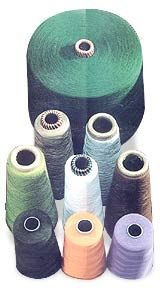Cellulosic fibres like viscose are formed from natural polymers which are
then dissolved and extruded as a continuous filament. A common source of
cellulose for these fibres is fast growing soft woods such as eucalyptus, which
have a harvest cycle of seven years. Eucalyptus is often grown as a monocrop and
there are significant environmental issues associated with such plantations,
such as loss of biodiversity.
Processing requires external inputs of energy, water and other raw materials and
emissions are produced. The cellulose is pulped in a sulphite-based process and
then spun, both with significant environmental impacts.
The production of viscose generates emissions to air in the form of sulphur,
nitrous oxides, carbon disulphide and hydrogen sulphide. Emissions from the
process to water result in high levels of COD and BOD. These emissions are all
considered to have major potential for creating environmental problems if
discharged untreated.
To find out more about the inputs and outputs of viscose production click here
